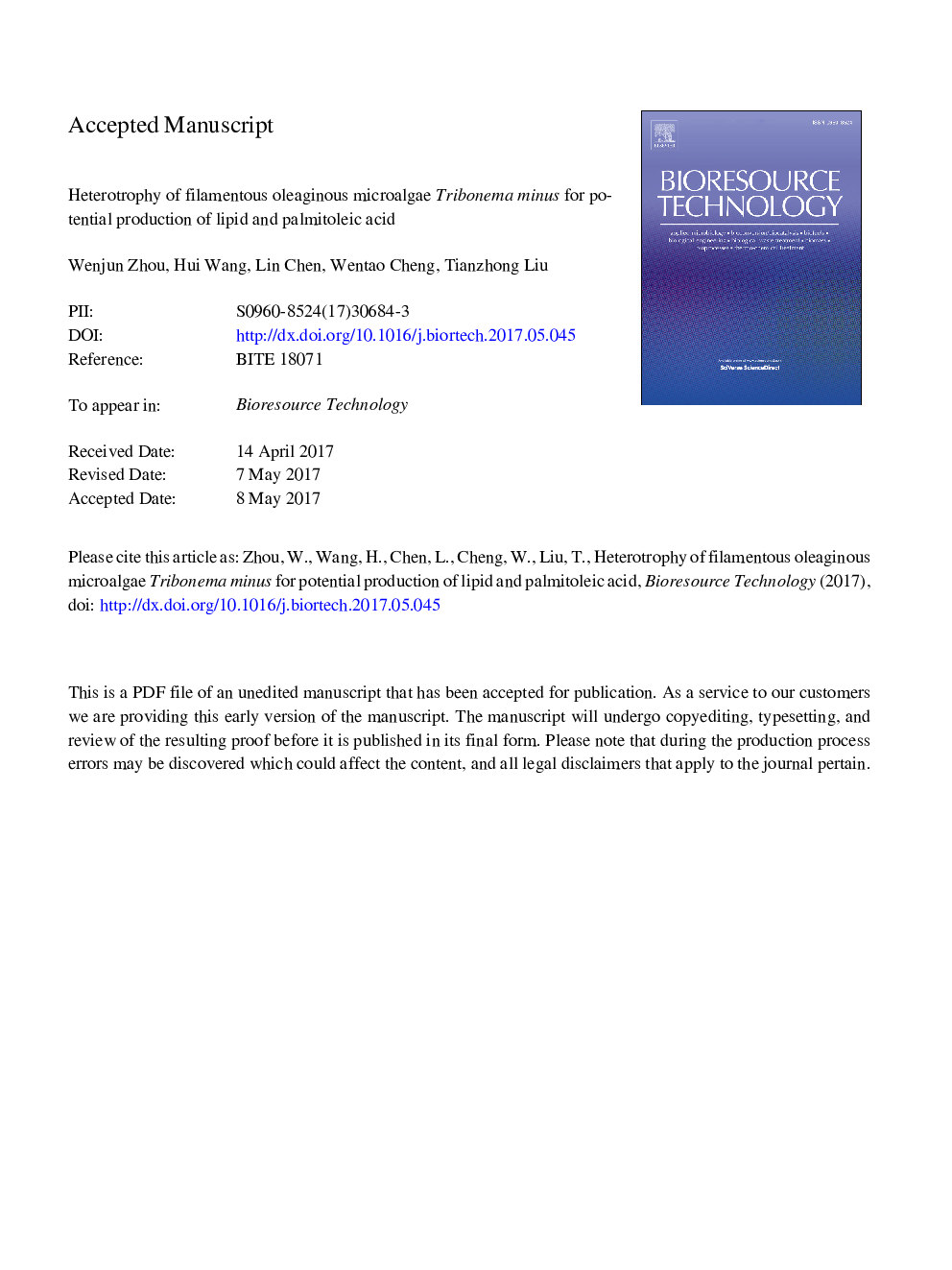| Article ID | Journal | Published Year | Pages | File Type |
|---|---|---|---|---|
| 4997174 | Bioresource Technology | 2017 | 32 Pages |
Abstract
Heterotrophic fermentation and high valuable co-product producing are thought to be effective ways to improve the economic viability and feasibility of commercial production of microalgae biofuels. This work reported the heterotrophic cultivation of Tribonema minus for lipid and palmitoleic acid (a novel functional fatty acid) production. Firstly, the heterotrophic ability of T. minus was identified for the first time with significant promotion in biomass and lipid productivity, and glucose and urea were then selected as the optimal carbon and nitrogen sources. Moreover, nutrient concentrations and culture conditions were optimized. Highest biomass and lipid productivity of 30.8 g Lâ1 and 730 mg Lâ1 dâ1 were obtained respectively by adding 80 g Lâ1 glucose at once. In addition, 2 g Lâ1 urea, 0.8 g Lâ1 K2HPO4, 24 mg Lâ1 ammonium ferric citrate, initial pH of 6, and temperature of 27 °C were determined as the appropriate conditions for heterotrophic growth and lipid production.
Keywords
Related Topics
Physical Sciences and Engineering
Chemical Engineering
Process Chemistry and Technology
Authors
Wenjun Zhou, Hui Wang, Lin Chen, Wentao Cheng, Tianzhong Liu,
